KINANGOP, Kenya — From his home on the Kinangop plateau, overlooking the Aberdare mountain range, James Gichia can see thin fingers of smoke rising from scattered settlements, farmers at work in their potato fields, the darker green marking stands of eucalyptus trees, and flocks of sheep grazing on open grassland. Every year there’s a little less grassland — and more woodlots and farmland.
In his 50s, Gichia, like the majority of his neighbors in Njambini village, is holding on to the livelihood passed down from his parents who settled on the plateau in 1964 when they moved onto what was formerly was part of the White Highlands, reserved for the exclusive use of Europeans during British colonial rule in Kenya.
“Kinangop has always been known for livestock rearing, activity that was practiced during and after the colonial era. Being a cold region, sheep rearing in particular thrives and I have always been rearing sheep,” Gichia told Mongabay.
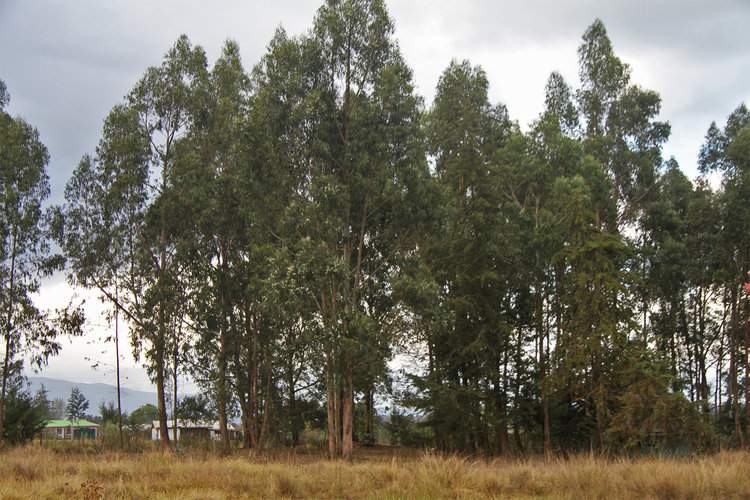
Kinangop — A rapidly vanishing grassland
The Kinangop grassland is a highland plateau nestled between Kenya’s Aberdare mountain range and the Great Rift Valley, at an elevation of around 2,400 meters (7,900 feet). Most of its 77,000 hectares (190,000 acres) are privately owned, given over to livestock and farmers cultivating crops like potatoes, maize and beans.
The montane grassland is also home to many species of birds, including the largest populations of three globally threatened and range-restricted species: Sharpe’s longclaw (Macronyx sharpei), the Aberdare cisticola (Cisticola aberdare) and Jackson’s widowbird (Euplectes jacksoni).
Unlike the savanna grasslands that Kenya is famous for, Kinangop consists mainly of tussock, a kind of grass that grows in tuft-like clumps interspersed with other grasses. During the dry season, tussock grass provides fodder for grazing animals.
Tussock grass also provides refuge for Sharpe’s longclaw, whose global stronghold is Kinangop. Longclaws search the grassland for insects to eat. The clumps of tussock provide shelter, nesting and protection from predators like owls and mongoose.
“Sharpe’s longclaw is a unique bird. Unlike others that can perch on trees, they do not. They build their nests within the tussock grass on the ground. They used to be spotted in numbers some years back, but are not as many currently,” Paul Kimani, a researcher and member of Friends of Kinangop Plateau, a conservation organization, told Mongabay.
Friends of Kinangop Plateau brings together more than 2,000 residents of the plateau, including farmers, researchers, tour guides, birders and conservationists. For close to two decades, it has worked with other conservation organizations to monitor the decline of Sharpe’s longclaw.
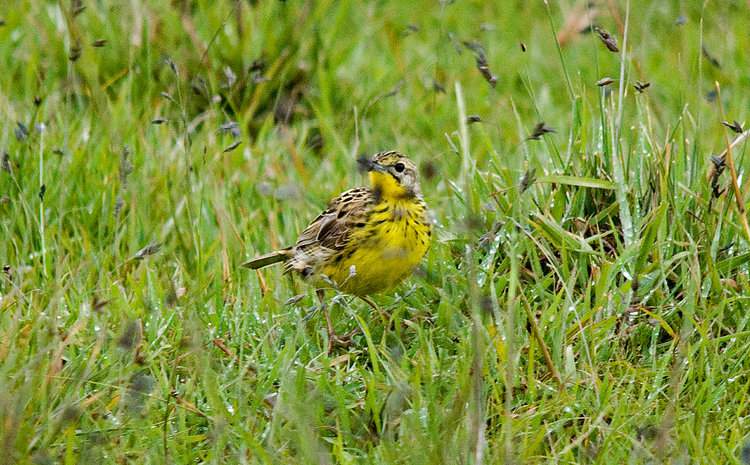
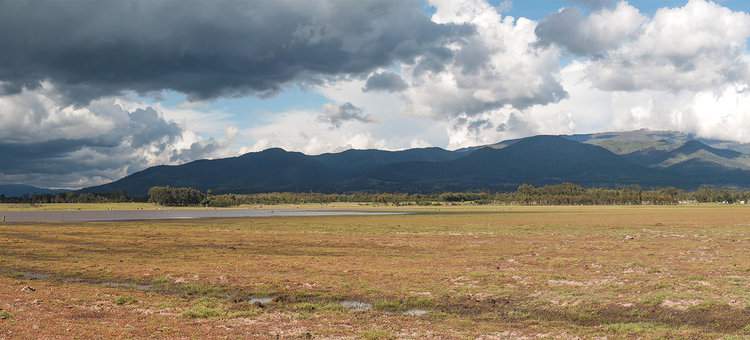
Between April and May 2021, the group conducted a survey that recorded just 286 of the birds across 387 hectares (956 acres) of the Magumu/Nyakio, Njambini, Engineer and Murungaru areas of Kinangop.
“We estimate that our survey covered 80% of existing suitable Sharpe’s longclaw habitat in the Kinangop grasslands, suggesting that fewer than 400 individuals and less than 1% of the original 77,000 ha of suitable habitat now remain,” the report notes.
The survey confirmed that the native grassland continues to be converted to croplands while in other areas it’s been replaced with exotic tree species, primarily eucalyptus.
According to Wachira Kariuki, a tourism officer and member of Friends of Kinangop Plateau, the introduction of eucalyptus here dates back to when white settlers introduced the species to help lower the water table in marshy areas of the plateau.
With Kinangop’s human residents putting increasing pressure on the plateau’s ecosystem, Peter Ndan’gang’a, a researcher at BirdLife International, surveyed Kinangop in 2000. At the time, he predicted that tussock grassland would cover only a fifth of the plateau by 2010. This prediction turned out to be too optimistic.
“The declining habitat of the Sharpe’s longclaw has adversely affected its populations even beyond the predictions we made then,” Ndan’gang’a said.
More than 90% of these highland grasslands, some 69,300 hectares (171,200 acres), have been lost in the past 50 years, steadily converted to farms and woodlots, shrinking habitat for Sharpe’s longclaw and other wildlife. Because the plateau is all privately owned, protecting this ecologically important habitat depends on the actions of individual owners.
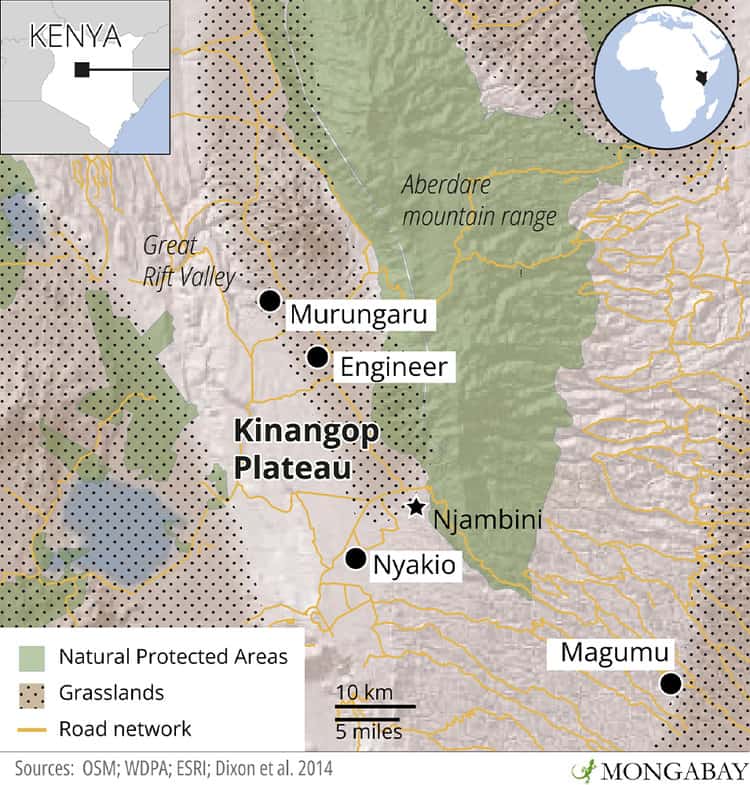
Sheep may be the answer
Farming Kinangop’s grasslands has produced mixed results, particularly with potatoes, which have been a leading cash crop. The risk of frost and the seasonal glut as all the farmers harvest their crops simultaneously cut into farmers’ income.
Gichia inherited 4 hectares (10 acres) from his parents. He’s dabbled in growing potatoes and devotes some of his land to growing vegetables, maize and beans, but has returned to rearing sheep on the majority of the land.
“Compared to potato farming, I prefer sheep rearing because I do not get exploited by middlemen. The standard price of a mature sheep is 15,000 shillings [$106]. Keeping cattle alongside sheep is also profitable because I get to sell milk besides selling sheep wooI,” he told Mongabay.
The difficulties confronting potato farmers may be opening the door to more residents returning to herding sheep as Gichia has. There’s a ready market for sheep in the butcheries around the plateau, but Friends of Kinangop Plateau have spotted an additional value: wool.
“Initially, sheep wool never fetched a lot of money even though there were a lot of sheep. In some cases, we would sell at 20 or 30 shillings [14-21 U.S. cents] or sometimes one could pay a shearer with the wool,” Gichia said.
Now, however, the wool can fetch the equivalent of about $1 per kilogram, or 45 cents a pound, according to Gichia. “[I]n a year, one can earn up to 1,000 shillings [$7] per sheep from wool alone.”
The existing challenges in the potato sector, has however given an edge to sheep rearing that comes with its own incentives-Njambini Wool spinning center in South Kinangop.
John Gitogo, chair of the Njambini wool crafters’ association, said that if farmers rear Corriedale sheep, a breed that produces bulky and high-yielding wool, rather than the traditional breeds, they can earn significantly more from both meat and wool.
“Before, the welfare of sheep was not very good because farmers were yet to tap into wool. Moreover, the sheep have been interbreeding and sometimes one cannot tell the breed they have. Farmers currently have proper sheds that allow them to also collect sheep dropping to use as manure while keeping the wool neat. Farmers are also deworming their sheep to keep them healthy to get more wool and meat,” Gitogo said.
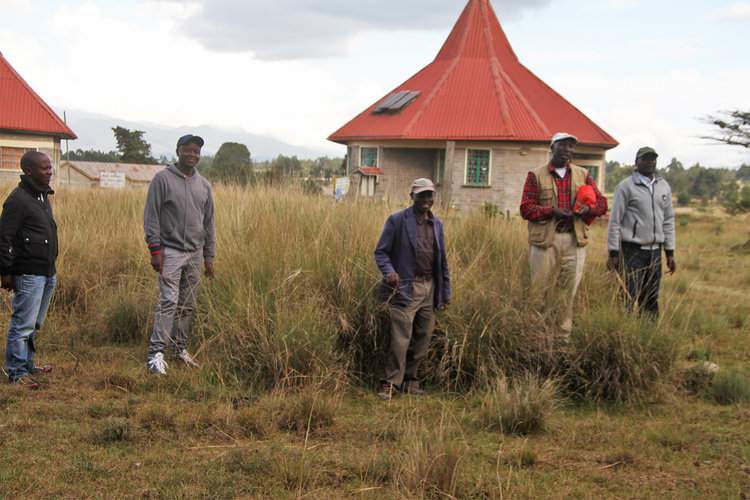
Friends of Kinangop Plateau have begun donating Corriedale sheep to farmers in exchange for a promise to maintain parts of their land as grazing for sheep — which is also habitat for longclaw and other species.
To further counter the threat posed by conversion of grassland, the conservation group has also partnered with Nature Kenya to purchase land that can act as a nature reserve for Sharpe’s Longclaw.
“We realized that the grassland was getting smaller and smaller, and being private lands, there is no control,” said Nature Kenya director Paul Matiku. “The surveys also revealed declines of the Sharpe’s Longclaw, which is a territorial bird. It thrived in these critical habitats in private lands that were undergoing fragmentation and we realized there was a need to secure nature reserves to be a refuge for the birds even in future.”
A first fundraising appeal raised enough money to buy a parcel of land as a grassland nature reserve in 2004. Today, there are four such reserves, covering a total of 200 hectares (nearly 500 acres) — nearly half of the remaining longclaw habitat. These reserves also serve as research and education centers, host beehives for Friends of Kinangop Plateau members, and welcome a few bird-watching tourists.
“Within the nature reserve, we also allow farmers to graze livestock at a fee during the dry season,” Kimani said.
Friends of Kinangop Plateau’s efforts to conserve Sharpe’s longclaw have inspired communities elsewhere to come together to protect threatened and range-restricted species, according to Paul Gacheru, a wildlife ecologist.
In the Dakatcha woodland, in Kenya’s Coast province, the Kinangop approach of establishing nature reserves has been replicated to secure critical habitats for birds like the endangered Clarke’s weaver (Ploceus golandi) and Sokoke pipit (Anthus sokokensis), and mammals like the golden-rumped elephant shrew (Rhynchocyon chrysopygus). In Taita-Taveta county, habitat for the critically endangered Taita thrush (Turdus helleri) and Taita apalis (Apalis fuscigularis) has been secured through similar approaches.
Farming stalls after a century-long advance
Between the early 1900s and 1962, Kinangop, the Aberdares and Mount Kipipiri were among areas classified as the White Highlands. Indigenous inhabitants were expelled and ownership of land was restricted to European settlers.
“The first colonialists arrived in early 1900s and they owned huge tracts of land that spread several miles,” says Wachira Kariuki from Friends of Kinangop Plateau. “After 1945, the white soldier settlers who fought during the World War II were awarded land in Kinangop and surrounding areas. By the time, most of the areas were soggy grasslands and wheat was a common crop. Livestock including cattle and sheep were also kept by the colonial inhabitants who with time, introduced eucalyptus trees to help in reducing water content.”
After Kenya gained independence in 1962, the new government redistributed the highlands to Indigenous Agikuyu who had been displaced decades earlier.
Alongside expanding farmland, a survey by Friends of the Kinangop Plateau found increasing amounts of land planted with eucalyptus trees, seemingly spurred by strong demand for timber from these fast-growing trees for firewood and fence posts. Samuel Bakari, director for natural resources for Nyandarua county, in which Kinangop falls, says the collapse of government-owned milk-processing companies in 1999 led to a decline in the herding of sheep and cattle — an activity that protected the grasslands.
“Livestock rearing actually preserved the grasslands and livestock coexisted well with range-restricted birds like the Sharpe’s longclaw. Crop cultivation, however, leads to uprooting of the tussock grass which the bird is highly dependent on,” Bakari says.
Kinangop lost its place as one of Kenya’s leading milk-producing area in the late 1990s when the Kenya Cooperative Creameries, founded in 1925, collapsed. Though the dairy cooperative was resurrected in 2005, the plateau’s dairy farmers continued to struggle with low prices and inadequate marketing for their produce, and most switched to farming potatoes and other crops.
Then came the post-election violence in 2007 and 2008, which prompted many people living in urban areas to return to their ancestral homes, including Kinangop, occupied variously in the past by the Agikuyu and other Indigenous peoples.
“The 2007/2008 period saw a lot of land subdivision in Kinangop where majority of the people who lived in towns moved in to purchase land to settle,” Bakari says.
The increasing use of land in Kinangop for farming hasn’t enriched most farmers. Ruth Muringe, a potato farmer and member of Friends of Kinangop Plateau, says potatoes grow well in the area, but because farmers are dependent on rain for irrigation, there’s a harvest glut when their crop comes to market at the same time, allowing canny traders to exploit them.
This, she says, can drive prices down to the equivalent of less than 3 U.S. cents per kilogram, or about 1 cent per pound.
“Given that we use a lot of pesticides to prevent potato blight and a lot more on land preparation, it is a loss,” Muringe says.
Adding to farmers’ woes, Kinangop’s high altitude makes it prone to frost.
This article by Caroline Chebet was first published by Mongabay.com on 17 July 2023. Lead Image: A Sharpe’s longclaw (Macronyx sharpei) on the Kinangop Plateau. Image by Peter Steward via Flickr (CC BY-NC 2.0).
What you can do
Support ‘Fighting for Wildlife’ by donating as little as $1 – It only takes a minute. Thank you.
Fighting for Wildlife supports approved wildlife conservation organizations, which spend at least 80 percent of the money they raise on actual fieldwork, rather than administration and fundraising. When making a donation you can designate for which type of initiative it should be used – wildlife, oceans, forests or climate.

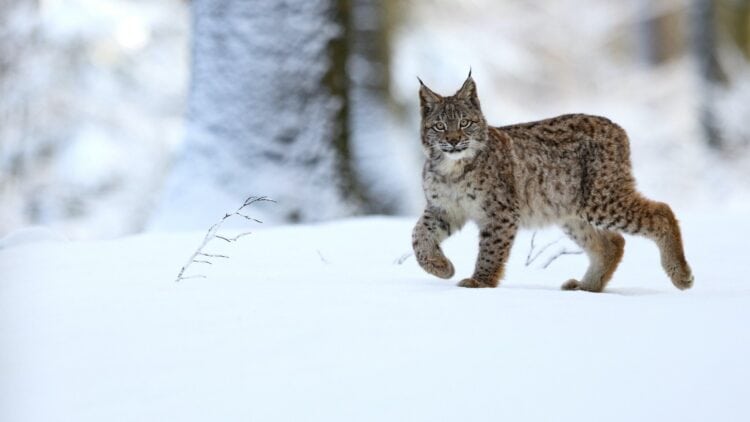
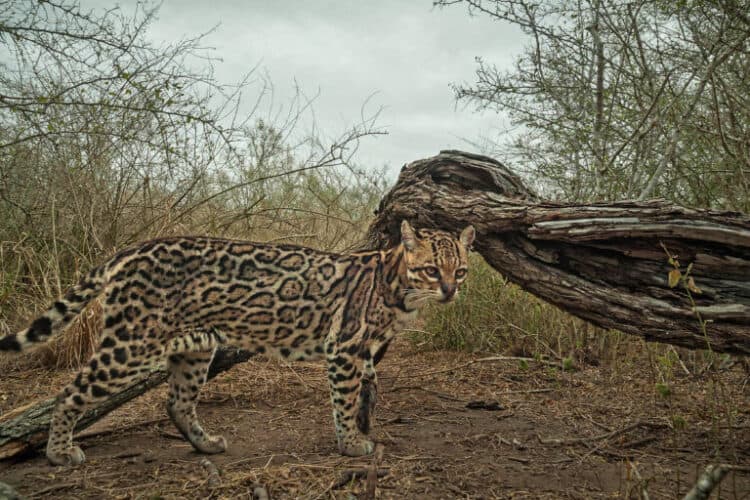

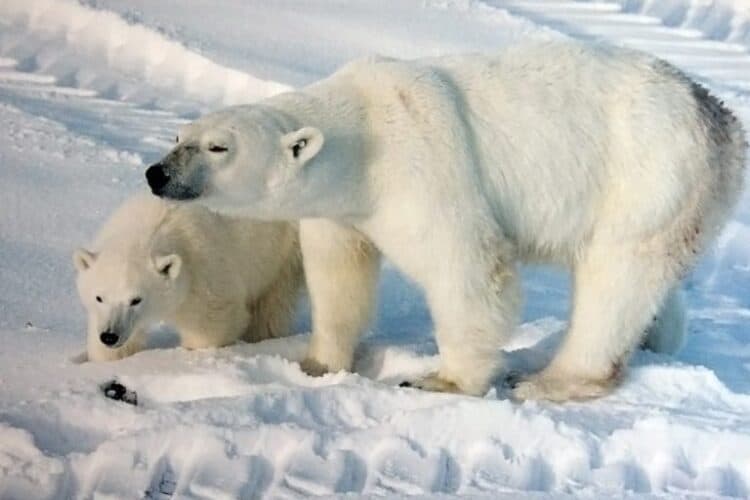
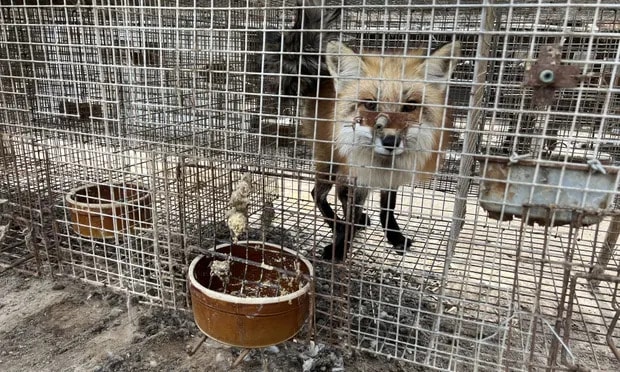
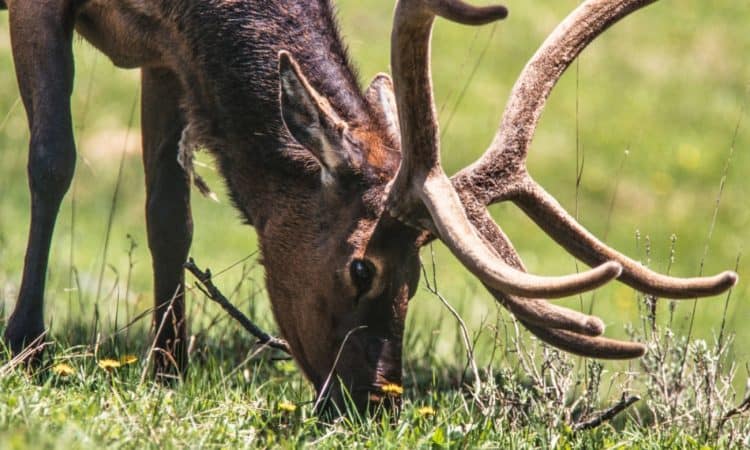
Leave a Reply